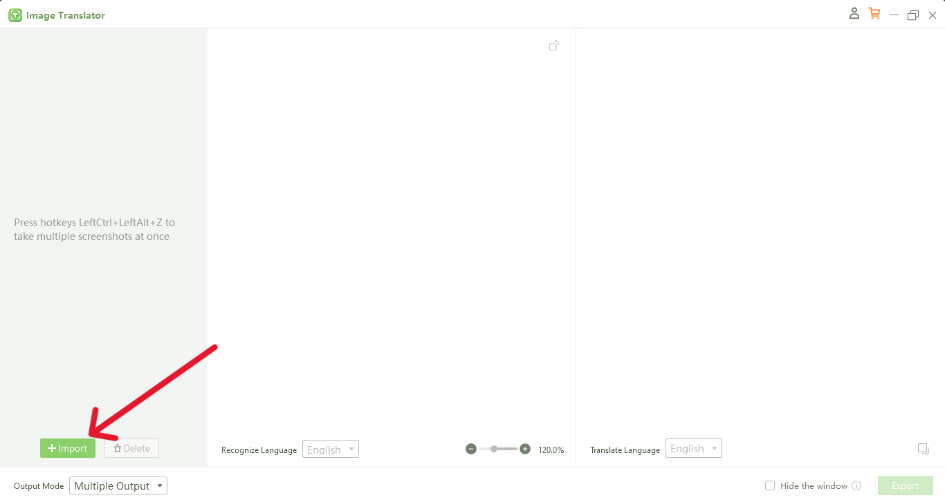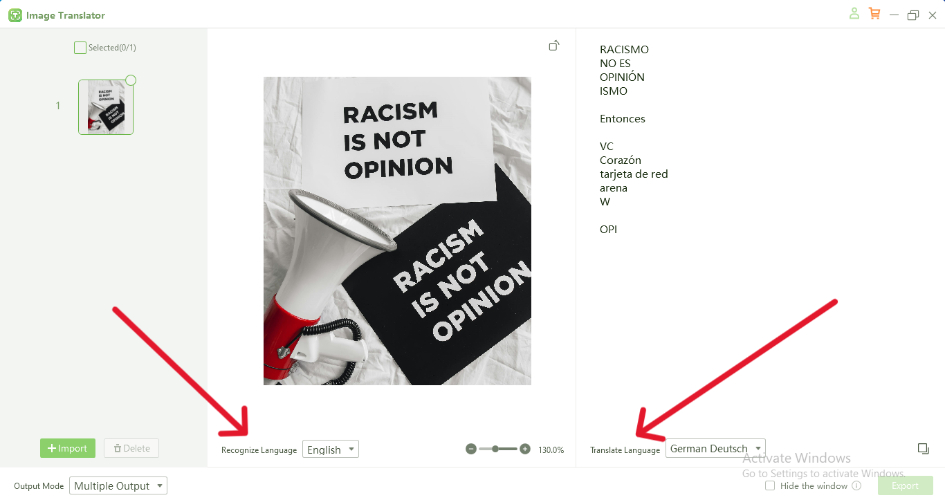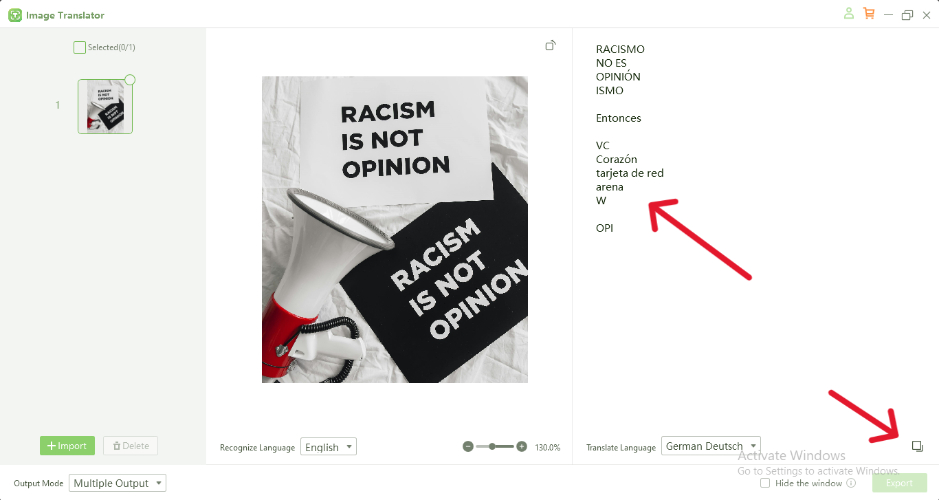How to Translate Poster for Global Marketing Campaigns
- Part 1. Why Translating Posters is Important
- Part 2. Steps for Translating a Poster
- Part 3. Best Practices for Translating Posters
- Part 4. Common Mistakes to Avoid
- Part 5. Step-by-Step Guide: How to Translate Poster with PDNob Image Translator
- Part 6. Conclusion
Reaching diverse audiences is essential for the success of any marketing campaign. Translating marketing materials, such as posters, ensures that the core message resonates across different linguistic and cultural boundaries.
The significance of translating marketing posters cannot be overstated, especially when your campaign is targeting international markets. A well-translated poster can help establish your brand, foster engagement, and drive sales across diverse audiences.
However, inaccurate translations can lead to misunderstandings, negative perceptions, and potential brand damage. Translating a poster effectively requires careful consideration of language, design, and cultural nuances.
Accurate translations ensure that your poster conveys the intended message clearly, increasing the chances of campaign success. By using the right translation methods, you can maintain brand integrity, avoid errors, and ensure that your marketing materials are culturally relevant.
This article will guide you through the importance of translating poster and provide practical steps to ensure your marketing campaign achieves global success.

Part 1. Why Translating Posters is Important
Reaching Different Linguistic and Cultural Contexts
When translating a marketing poster, it’s essential to consider the diverse linguistic and cultural environments in which it will be viewed. Simply translating the text word-for-word may not always be the most effective approach. Cultural context, local idioms, and expressions play a significant role in how your message is received. For example, a phrase that works well in English may not have the same impact in French, Spanish, or Japanese. Accurate translation ensures that the marketing message is appropriate and relatable to the target audience, which is crucial for driving engagement.
Increasing Brand Recognition and Engagement
By translating your marketing posters, you not only ensure that the message is understood, but you also increase brand recognition in foreign markets. A localized poster shows that your company values the target audience's language and culture, which can foster trust and loyalty. Customers are more likely to engage with a brand that speaks their language and understands their values. Therefore, translating posters is not just about words but also about creating a connection with potential customers on a deeper level.
Part 2. Steps for Translating a Poster
To translate a poster effectively, it's important to follow a structured process. Here are five key steps you should follow to ensure that your poster translation is accurate and effective.
Step 1: Identify Key Messaging
Before translating the text on your poster, clarify the core message. What is the primary objective of the poster? Are you promoting a product, service, or event? Understanding the intent behind the poster will help you make decisions about how to adapt the language for the target audience.
Key questions to ask:
- What are the key selling points of your product or service?
- What emotions or actions do you want the viewer to associate with the poster?
- Is there any text that should remain consistent across different languages (e.g., slogans or brand names)?
Identifying these points will help you focus on translating the most crucial elements, ensuring your marketing message stays clear and impactful.
Step 2: Choose the Translation Method
You can choose between manual translation and automated translation tools. Manual translation ensures greater accuracy, especially when dealing with nuanced marketing language. However, it can be time-consuming and expensive. On the other hand, automated translation tools like PDNob Image Translator can extract and translate text from posters quickly and accurately, offering a more cost-effective and time-efficient solution for businesses.
If you opt for automated translation, PDNob AI Image Translator is an excellent option, as it can handle text from images and PDFs and supports multiple languages, making it perfect for global marketing campaigns.
Step 3: Adapt the Design
Once the text is translated, the next step is to ensure that the design accommodates the translated text. The layout, font size, and positioning of text are critical to maintaining the visual appeal of the poster. Translated text can often take up more or less space depending on the language, so adjusting the design elements is crucial for visual consistency.
- Font size and style: Ensure that the translated text fits within the space provided. Some languages, like German or Russian, may require longer words that could crowd the design.
- Spacing and alignment: Adjust text alignment and spacing to ensure readability and a balanced look. Consider local preferences for text orientation (e.g., left-to-right vs. right-to-left languages).
Adapting the design while keeping it visually appealing ensures that your translated poster will be just as effective as the original.
Step 4: Test Translations with Native Speakers
Even after the text has been translated, it’s vital to test it with native speakers of the target language. Native speakers can help identify any potential issues with cultural sensitivity, awkward phrasing, or misunderstood terms. They can also ensure that the tone and style of the translation match the intent of the original message. This step is particularly important when dealing with idiomatic expressions or culturally specific references.
Using native speakers for testing helps you avoid embarrassing mistakes and ensures that the poster resonates well with the target audience.
Step 5: Finalize and Print
After testing and making necessary adjustments, finalize your design and translation. Ensure that the file format is suitable for print, whether it's a high-resolution PDF or image file. Double-check all translated text for accuracy, consistency, and clarity before proceeding to print and distribution. It’s also helpful to save a digital version for online marketing campaigns.
Part 3. Best Practices for Translating Posters
To make the most out of your translated poster, follow these best practices:
Preserve the Original Tone and Style
The translation should reflect the original tone and style of the marketing message. Whether the poster is playful, formal, or inspirational, the translation should convey the same emotional appeal. The wording should align with your brand’s voice, creating a consistent experience across all markets.
Adapt Imagery and Symbols
The visuals used in your poster should also be culturally appropriate. Some images, symbols, or colors that are effective in one culture may not resonate or could even be offensive in another. Ensure that any imagery is relevant to the target market and aligns with local customs or preferences.
Test with Native Speakers
As mentioned earlier, testing your translation with native speakers is an invaluable practice. They can spot errors or awkward phrasing that might go unnoticed by non-native speakers. This will ensure that your poster maintains its intended impact across different cultures.
Part 4. Common Mistakes to Avoid
When translating posters for international marketing campaigns, here are some common mistakes to avoid:
Overcrowding the Poster
Adding too much text to a poster can overwhelm the viewer. Remember that posters are visual mediums, and they should convey a message quickly and clearly. Keep the translated text concise and to the point.
Poor Quality Translations
Using low-quality translation tools or literal translations can result in misunderstandings and miscommunications. Always opt for professional translation services or trusted translation software like PDNob Image Translator, which specializes in extracting and translating text accurately.
Ignoring Cultural Sensitivities
Cultural nuances should always be considered when translating a poster. Certain colors, symbols, or phrases may have different meanings in various cultures, so it’s important to understand local preferences and avoid potential pitfalls.
Part 5. Step-by-Step Guide: How to Translate a Poster with PDNob Image Translator
PDNob Image Translator is an excellent tool for translating posters quickly and accurately. Here’s a simple guide on how to use it:
- Download and Install the Software from Official Website
- Upload the Poster Image
- Choose the Target Language
- Extract the Text



Part 6. Conclusion
Translating marketing posters is crucial for the success of global campaigns. With the right translation method and tools like PDNob Free AI Image Translator, businesses can ensure that their posters communicate the intended message across different cultures and languages.
By following best practices, adapting the design, and testing with native speakers, you can avoid common mistakes and create impactful marketing materials. Whether you’re promoting a new product, event, or service, investing in quality translation and localization can significantly improve your international outreach and customer engagement.
Speak Your Mind
Leave a Comment
Create your review for Tenorshare articles
 PDNob Image Translator
PDNob Image Translator
Instantly translate various types of images to text.






